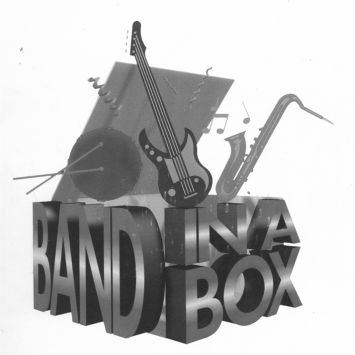
Is Band in a Box a toy for amateur songwriters and musicians who wouldn't know an F from an E# or is it a real piece of software for serious players?
Yes.
I have been "fooling around" with Band-in-a-Box since about Version 1.1, which came on a couple of 720k floppies and ran on an IBM XT with 640k and a 1200 baud modem.(!) That version might have been mostly a toy, but no more. Like most applications that have survived the last few years, Band-in-a-Box has become more useful and grown in the size of the program. Version 7 required a CD to contain the program.
For those who have no idea what Band-in-a-Box is, a brief description: it's just what the title says: a back-up band that will play any song you input or load, in any key, at any tempo, any time signature and in any of some 150 different styles of performing.

At its simplest, Band-in-a-Box is an automatic musical accompaniment program – the default is drums, bass and piano or guitar – playing a chord progression, which can be typed in measure by measure. For folks with insufficient music knowledge to input the actual chords of songs, many songs are included, with the chords and styles already in place, rather like a karaoke package.
This is a wonderful tool to use for practice, as the software never tires of playing the same piece repeatedly or trying it in different keys. It is also suitable for singers, especially those who do not know what key they sing in. (A little experimentation is all that's needed to figure that out.)
If all that Band-in-a-Box did was that – which is what the first versions did – then the application would probably be worth your money. For the more serious musician, however, there is greater depth to this package, in particular in its "Styles" modules.
This feature allows the user to play a tune in various styles, ranging from basic blues, rock and Big Band to styles specific to individual musicians. You can, for instance, hear how Django Reinhardt might have played "Feelings" or how Chet Atkins might handle "Giant Steps."
It can get downright amusing, once you realize you can fool around with these styles at will. Instead of Chet on "Giant Steps," how about Barry Manilow, or even a bluegrass version? All a keystroke away.
Version 7 also introduces soloists to the package, a feature that can be downright spooky. While playing around with a song with a complicated chord progession, I set it to play a solo against that progression and got what was very nearly the melody I had written for the piece.(!) Band-in-a-Box provides the user with some 100 different styles of soloist, and, for the adventuresome user, the ability to edit the soloist files. For the beginning user, the selections available might trigger overload, but, fortunately, this can be ignored if desired.
The software will also add harmonies, which also come in a variety of styles, on the melody and through to other outboard equipment. You can customize these harmonies and save your favorites.
Band-in-a-Box supports MIDI, allowing the user to play and record melodies and export them as MIDI files for use elsewhere. General MIDI patches are the default, but the patches for different keyboards are also included.
A number of drum styles come with the package and the user can, as with everything else, create custom drum styles or modify existing styles. Musicians without drummer training will find this feature enlightening as well as frustrating. Rhythmic flaws will be instantly revealed.
The documentation that accompanies the new release is also much improved over the first versions, when the accompanying instructions were essentially reduced copies, riddled with typos. This improvement in documentation is important, as this program has many features to explore and some of them are not intuitively obvious.
Naturally, the manufacturer, PG Music, offers a number of extensions to the basic program, including style discs in any number of genres, including New Orleans, New Age, Ragtime, blues and jazz pianist discs, a bluegrass Band and Children's styles; modules that will allow editing of Sound Canvas; a PowerTracks Pro module that will handle 48 Track MIDI and SMPTE recording and video instructions.
Version 7 narrows the gap between the earlier version and professional software packages such as Cakewalk and Pro Tracks and can produce compatible files for these products.
For songwriters who do not play an instrument, Band-in-a-Box is the answer to their wishes, provided the songwriter is willing to learn a little about music. The software is forgiving and easy to use at the entry level. Exploration of its various capabilities might even lead the songwriter to learn more about music.
Workable songwriter demos can be produced with very little effort as well, although, like most other things in the music business, the more knowledgeable the user, the better the final product. Still, it definitely beats paying someone else to cut a demo for critique.
Also, the package will produce better-sounding music on a more sophisticated sound card, such as a Sound Blaster 64, but even a regular modem will suffice.
Overall, Version 7 has a lot of nifty bells and whistles and features which make its use easy, particularly for those without serious musical training. It would make the perfect gift for that computer-head musician in your family.
Band-in-a-Band version 7 requires Windows 3.1 or higher; 4MB available memory; a 386 or faster processor; 5MB of hard disk space; a MIDI system or PC sound card or modem and headphones or speakers. The CD-ROM version requires a Windows compatible CD-ROM drive.
Band-in-a-box is available from PG Music, 266 Elmwood Ave., Ste. 111, Buffalo, NY 14222; phone 800-268-6272. Their Web Site is at http://www.pgmusic.com